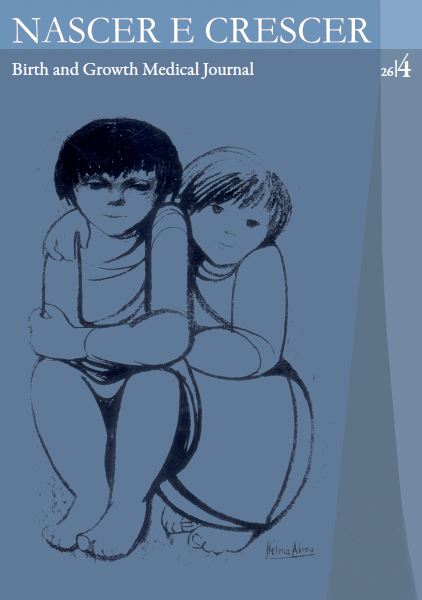Child safety in preschool years - what do caregivers know?
DOI:
https://doi.org/10.25753/BirthGrowthMJ.v26.i4.10279Keywords:
Child Safety, Health Education, Intervention, Primary PreventionAbstract
Introduction: Accidents in the early years of childhood are the leading cause of morbidity and premature mortality. This study aimed to assess preschool children caregivers’ knowledge about child safety.
Methods: Cross-sectional study, using a structured selfadministered questionnaire to caregivers in a Family Healthcare Unit, between September and December 2014.
Results: Fifty-six caregivers agreed to participate, 80% females, median age (minimum-maximum) of 34 (22-63) years, caregivers of 99 children, with a mean 1.7 child/family. Eightynine percent routinely search about child safety and 37% states that it is topic discussed in all child healthcare visits. Only 14% answered all road safety questions correctly and despite 95% use a child-restraint system, only 18% applies it properly. In drowning prevention, only 31% promotes the use of inflatable swimming armbands and 11% of caregivers allows unsupervised play in the bathtub. In relation to falls prevention, we highlight that baby walkers are handled by 41% and only 29% of caregivers perform all appropriate preventive measures. Burn avoidance was the subject with greater shortcomings, with a total of 27% correct attitudes, and none of the caregivers answered accurately to all questions. On the other hand, choking and poisoning were the areas with higher rates of correct answers (54% and 41% respectively).
Conclusions: Child safety proved to be a caregivers’ concern. However, daily incorrect behaviors are still common. Health care professionals have the responsibility to promote more effective awareness programs and approach this topic to caregivers more regularly in their practice.
Downloads
References
Karen Judy, MD. Unintentional Injuries in Pediatrics. Pediatrics in Review. 2011; 32:431-9.
Michael E. Höllwarth. Prevention of Unintentional Injuries: A Global Role for Pediatricians. Pediatrics. 2013; 132:4-7.
MacKay M and Vincenten J. Child Safety. Report Card 2012 – Portugal. Birmingham: European Child Safety Alliance. Eurosafe. 2012.
MacKay M and Vincenten J. Child Safety Report Card 2012: Europe Summary for 31 Countries. Birmingham:European Child Safety Alliance. Eurosafe. 2012.
Instituto Nacional de Estatistica - Causas de morte em Portugal. (Acedido em 27 de janeiro de 2016). Disponível em: www.ine.pt.
Dias J, Costa S, Martins S. Prevenção de acidentes em idade pediátrica: o que sabem os pais e o que fazem os médicos. Acta Pediatr Port. 2013; 44:277-82.
APSI, Afogamentos de Crianças – Relatório 2002/2010. (Acedido em janeiro de 2016). Disponível em: www.apsi.org.pt.
Vincenten J., Russell S. European Child Safety Alliance and ANEC joint position statement: Baby walker. European Child Safety Alliance and European Consumer Voice in Standardisation. 2010.
Downloads
Published
How to Cite
Issue
Section
License
Copyright and access
This journal offers immediate free access to its content, following the principle that providing free scientific knowledge to the public provides greater global democratization of knowledge.
The works are licensed under a Creative Commons Attribution Non-commercial 4.0 International license.
Nascer e Crescer – Birth and Growth Medical Journal do not charge any submission or processing fee to the articles submitted.


